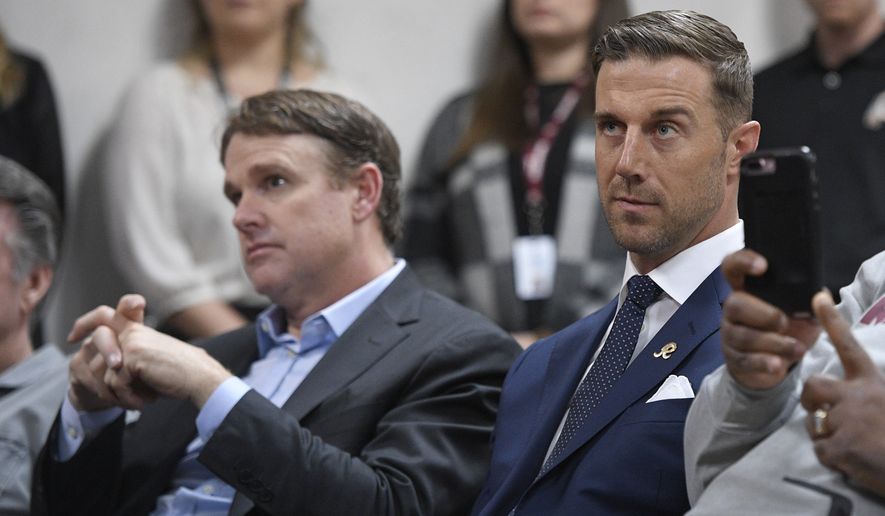Alex Smith isn’t one for showing off. The new Redskins quarterback downplayed the idea of meeting up with his receivers in the offseason to get early work in.
After all, he doesn’t even have a playbook, yet.
“I think a lot of that stuff looks great on TV,” Smith said. “I think it’s great for Instagram followers, but to be honest, at this point we’re limited on what I can get my hands on, scheme-wise, and there’s all these rules and stuff.”
There’s a good chance, too, the Redskins’ playbook will be tweaked before next season.
Redskins coach Jay Gruden said Thursday he’s looking forward to incorporating concepts to suit Smith’s strengths. The Redskins’ terminology and certain tendencies will likely remain the same, but Gruden said he will talk with Smith to get on the same page.
Gruden has already studied hours of tape on Smith since learning in January the trade with Kansas City was a possibility, and he said he’s excited to brainstorm with the veteran.
“As you can see, he’s probably smarter than me and I’m not a big fan of that,” Gruden joked. “But I think we have to learn from each other. It’s not about what I like. It’s about what he’s comfortable with and what can make our offense move the ball down the field.”
Get ready to see more RPOs in Washington. That stands for run-pass option and they were all the rage in 2017.
The plays are defined by allowing the quarterback to choose whether a play should be a run or a pass after the snap, based on what the defense is doing.
The Redskins have used them, and Gruden said they could start calling more to take advantage of Smith’s skillset. In Kansas City, Chiefs coach Andy Reid refined his offense around RPOs — and they had the fourth-most efficient offense by offensive DVOA, according to Football Outsiders.
The last-second decision-making in RPOs allows for flexibility, which can keep defenses constantly off-guard. The Super Bowl-champion Philadelphia Eagles ran a league-high 207 RPOs last season. The league average was 66, according to Pro Football Focus.
The Chiefs had dynamic weapons in running back Kareem Hunt, wide receiver Tyreek Hill and tight end Travis Kelce to punish defenses that made the wrong read.
With those playmakers and Smith’s own speed — he can scramble — the Chiefs offense was a force in 2017. It’s not a coincidence Smith had the best year of his career with 4,042 yards with 27 touchdowns.
“I think the ability (Smith) has to get outside of the pocket, do zone-reads, do some of the RPOs, do off schedule plays, protect the football — I think I’m just excited to see what he knows, teach him what we know and come up with a great solution, a great plan,” Gruden said.
Smith has done his homework on Gruden’s offense, too. He said the offense “looked fun” while watching film over the years. The scheme, he said, attracted him to the Redskins in the first place.
Smith said he sees a scheme “put really well together.” He added he likes the “balance” in Gruden’s system.
The Redskins offense, though, needs to take a step forward in 2018. After two straight years finishing in the top 12 in offensive DVOA, the Redskins offense finished 20th (14th passing, 28th rushing) last year.
In terms of more “simple” stats, the Redskins ranked second-to-last on third-down — with a miserable 32.35 percent conversion rate.
The Redskins already tried to address some of their offensive woes by adding wide receiver Paul Richardson in free agency. Redskins senior vice president of player personnel Doug Williams had emphasized multiple times that Washington needs an upgrade at running back.
Washington, though, has playmakers in running back Chris Thompson, tight end Jordan Reed and receivers Jamison Crowder and Josh Doctson.
There is room to be creative — and Smith said he’s excited to continue that.
“I like to be kind of that Swiss army knife and be able to take advantage of a lot of different things,” Smith said.
• Matthew Paras can be reached at mparas@washingtontimes.com.




Please read our comment policy before commenting.